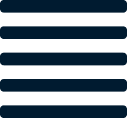The mega shopping event has come to a close and by now you likely know if you met your goals or not. But what about the details? The analysis of this event will be what fuels product decisions and budgets for the year to come.
So what exactly should you be looking for? Read on to find out more and what you should be doing with this information.
What to look for
2020 will either be the year of unusable data or the year that reflected new emerging trends.
What was COVID-19’s true impact? Did demand get pulled forward, or disappear all together? Will optimistic news of the vaccine be the reason behind open wallets?
Similar to the theme of current times, little is known about these questions. One day, we might look back and understand, but until then, we must use the information we have today to drive us forward. That journey begins with understanding the things that are most important - performance to forecast, to last year, and your current inventory position.
Variance to Forecast
Let’s start with the basics. Keep in mind, when analyzing performance always look at individual products as well as attributes and categories. You must look at the whole story to paint the whole picture. When looking at actuals, you are either going to see positive or negative results to your plan. Both of which are equally important to understand.
Though keep in mind any results which may be attributed to anomalies such as low stock levels (either this year or last), marketing activity, or merchandising. These things should be top of mind when analyzing and comparing products and categories.
When finding results that are positive to forecast, ask yourself the following:
- Are these results indicative of a new trend, perhaps due to price or need?
- What was the impact on other products/categories? Is there product cannibalization taking place? If so, there may be an opportunity to tighten your investments.
- Did you oversell inventory to the point where you’ll now experience a period of stockouts? In this case the trend may level out due to lost sales. Or perhaps those sales will be absorbed elsewhere, in which case you should be prepared.
Alternatively, you may find results that are negative. In which case, consider:
- How does this compare to the rest of the year? Perhaps what you’re seeing is not the result of the current times but rather actual demand for that product. Use this information to drive assortment conversations and avoid SKU proliferation.
- How does this influence your stock position? Are you over invested in inventory (indicated by inventory valued well over your ideal WOS)? Are there opportunities to move through the inventory to liquidate and improve your cash on hand?
- Are the results you’ve seen a factor of low visibility? Make sure you’re accounting for performance as it relates to a product’s merchandising. The two go hand in hand. In an effort to test this theory and move through more inventory, get creative with the product’s location, including any cross merchandising.
Variance to last year
All of the above should also be compared to any prior time periods. The challenge with this year is that those time periods may not be as comparable as they’ve been historically. Total demand aside, the relationship between products may indicate shifts that can be expected more long term. They also may be a result of new customers and therefore, new behavior you’re capturing. When comparing performance to prior time periods, always consider any changes in your customer profile. Be it location, age, gender, or household income. All of these factors can be new trends for your business and thus, indicate new inventory patterns that should be accounted for.
Assessing your inventory position
While we touched on this briefly above, managing your stock level is critical to improving your profitability. Once you make adjustments to your forecast, analyze your new WOS on hand by product and location. Ensure your locations are balanced with the amount of inventory you feel comfortable carrying.
From here, analyze your purchasing needs. There may be benefits in some areas of not having to deploy POs until later as you move through the inventory. Though in some case, you will want to release the cash tied up in this investment in order to spend elsewhere. In those situations, utilize the various methods of managing overstock.
There may also be areas that are at risk due to a lack of inventory. For the ones that will result in lost sales, prioritize what you can in your production. Ensure the decisions that are being made are both financially and strategically sound. Involve other stakeholders and discuss these strategies (and the results) on an ongoing basis.
Of course, these things take time to analyze. When you’re in the cusp of the holiday season, every minute counts. With Fuse, you can be assured that the few minutes you invest in getting set up will lend itself to 10+ hours back in your week.
We built our platform to be quick and intuitive. Data syncs daily so you no longer have to wait to know how much to buy. Our reports automatically show you how you’re performing to your plan, and what that means for your inventory. Real time order recommendations mean you’ll always have visibility of your inventory and profitability. With Fuse, you can scale your supply chain and set your business up for success.
.png)

.png)









.png)



%20hover.png)
.png)
hover.png)







Let us know what you think about this post
Put your comment below.